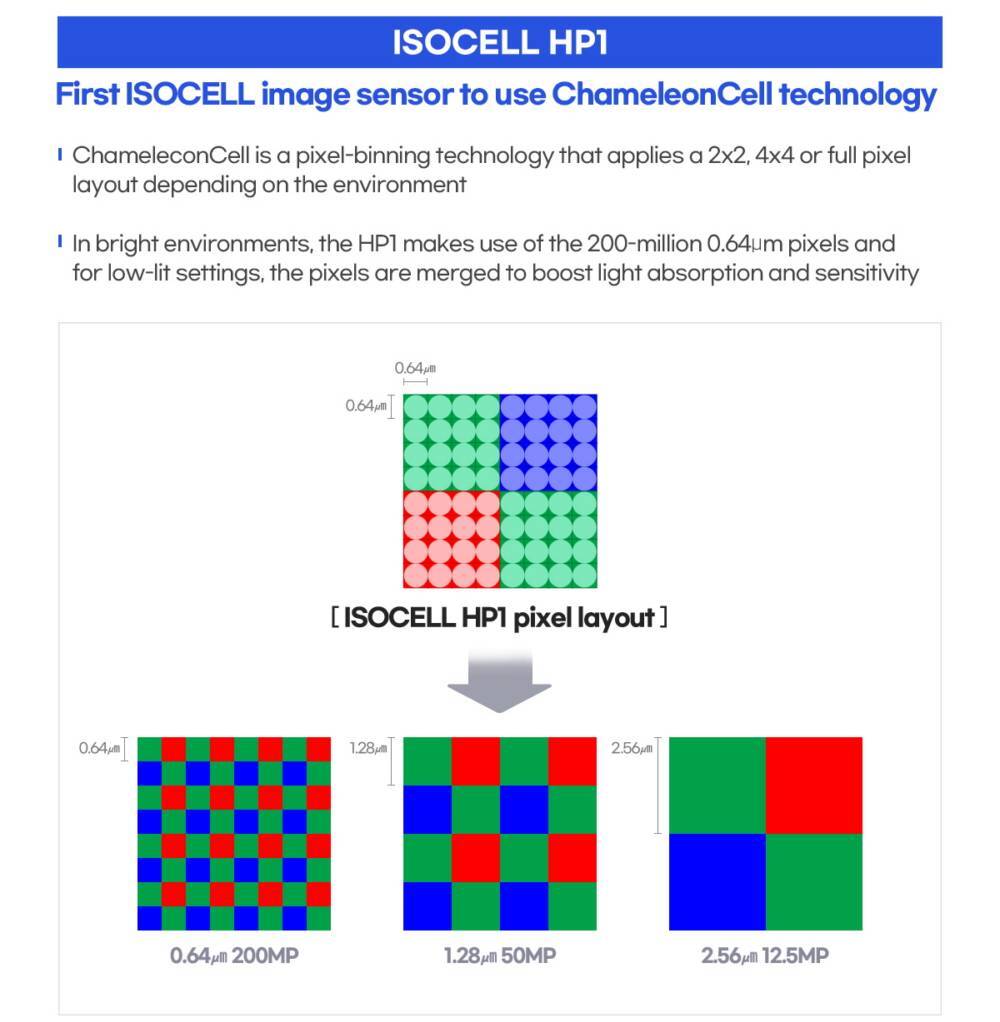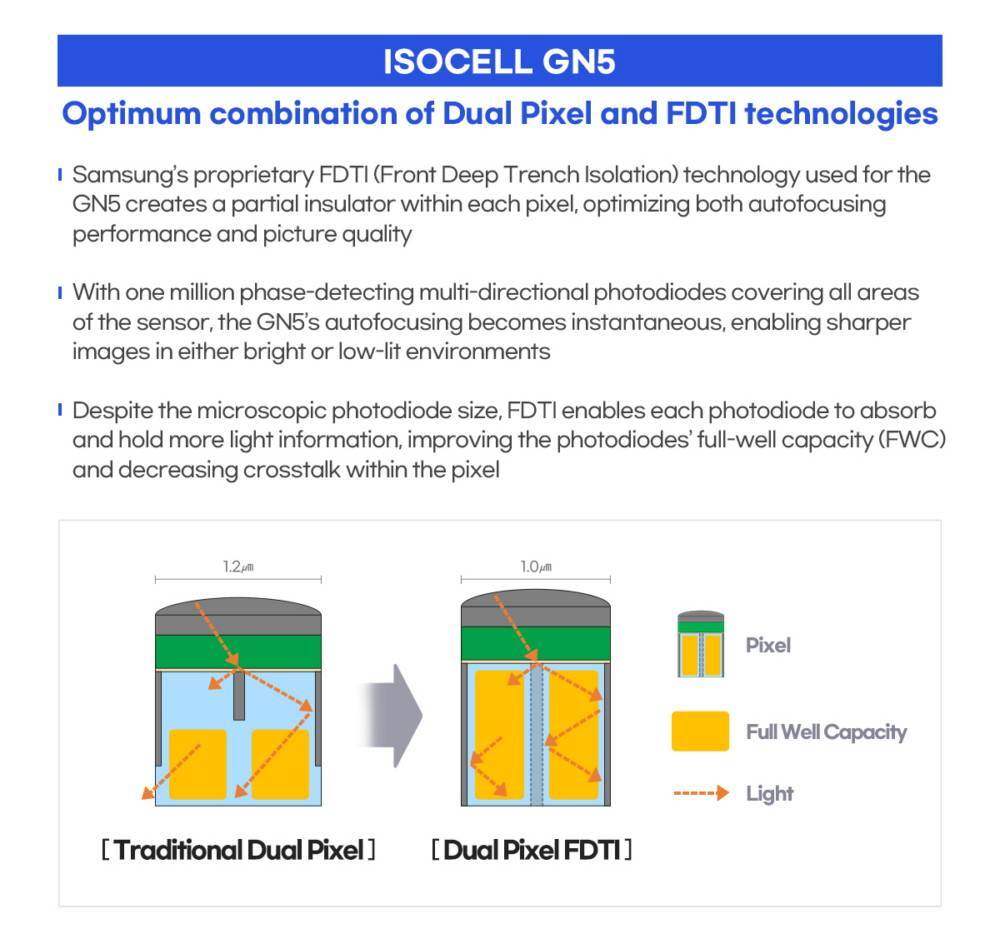Samsung announces 200MP and 50MP camera sensors, possibly coming to Galaxy S22-series

Samsung is bringing a nuke to the arms race in the megapixels wars as it has just announced the industry's first 200MP camera sensor. Called the ISOCELL HP1, this new camera sensor will use a new pixel binning tech and will allegedly greatly improve low-light camera performance. Along with the ISOCELL HP1, Samsung also announces the 50MP ISOCELL GN5, which improves the autofocusing thanks to its smaller pixels. One of these could make it to the top-end Galaxy S22 Ultra early next year, whereas the other is likely powering up the Galaxy S22 and Galaxy S22+.
Enter the 200MP monster: 200MP ISOCELL HP1
So, what's the deal with the ISOCELL HP1? As already mentioned, it's the first 200MP camera sensor on the market and is likely making its way to Samsung's next flagship endeavor, the Galaxy S22-series and the Galaxy S22 Ultra in particular. The sensor has 0.64-micron pixels, which isn't ideal for low-light scenes where larger pixels are generally favored. Fortunately, the ISOCELL HP1 alleviates this thanks to the new so-called ChameleonCell pixel-binning tech, which can group between 4 to 16 pixels together in a single pixel that is much more sensitive to light and thus improves low-light photography.

ISOCELL HP1
To sum up, ChameleonCell turns Samsung's new 200MP sensor to a 50MP one with 1.28-micron pixels or 12.5MP one with 2.56-micron pixels. Of course, in broad daylight when light is ample, the sensor will use 200MP to the fullest and eke out the best detail from the scene. Of course, pixel-binning has its drawbacks, namely decreased color accuracy, but this isn't something crucial for low-light photography. The 200MP sensor also allows for 8K/30fps video recording with quad-pixel binning.
Autofocus versatility: 50MP ISOCELL GN5
The main strength and selling point of this new 50MP camera sensor is its super autofocusing speed which has been achieved thanks to using many more photodiodes - nearly a million. These alloow for nearly instant autofocus, as claimed by Samsung. This sensor is packing 1.0-micron pixels, which is slightly smaller than the 1.4-micron pixels on the ISOCELL GN2, launched earlier in 2021. This sensor is outfitted with Samsung's proprietary dual-pixel technology, which applies Front Deep Trench Isolation (FDTI) to each pixel and "enables each photodiode to absorb and hold more light information, improving the photodiodes’ full-well capacity (FWC) and decreasing crosstalk within the pixel."

ISOCELL GN5
What phones could come with Samsung's new 200MP sensor?
So far, the rumors are all there as far as the Galaxy S22 Ultra is concerned, but back in April we heard that a 200MP camera with 0.64-micron pixels is slated for the upcoming top flagship. That's an oddly specific rumor that matches up with the specs of the ISOCELL HP1 exactly, which could mean that the new sensor is intended for the Galaxy S22 Ultra. Of course, Samsung will never reveal such an information beforehand, so until the phone is official, we're in the twilight zone.
What about the 50MP sensor?
Again, we've been hearing rumors that the Galaxy S22 and S22+ could sport new 50MP sensors for their main cameras for a while now, though intricate specifics like micron size and the such have evaded our ears. We mostly assumed that the ISOCELL GN2 with its 1.4-micron pixels could fit the build for the more affordable upcoming flagships, but the new development in Samsung's camera department opens up the possibility for a brand new, faster-focusing camera sensor to make it to the Galaxy S22 and S22+.
As we know more, so will you.










Things that are NOT allowed: